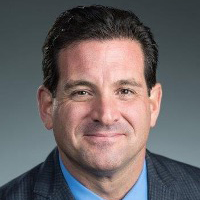Imagine it’s the late 1970s: on November 6, 1978, Congress quietly adds Section 401(k) to the tax code, unwittingly sparking a retirement savings revolution. A few years later, employees suddenly found they could contribute up to 25% of their salary (capped at $30,000) into these new plans – an unheard-of opportunity at the time. Fast forward to 1997: the Roth IRA debuts, flipping the script by allowing Americans to pay tax upfront and enjoy tax-free income in retirement. Each of these historical shifts opened new doors for savvy savers. But with every opportunity comes new complexity, and today’s CPA practice owners face a particularly modern puzzle (and opportunity) in the retirement planning arena: the “Mega Backdoor Roth” 401(k) strategy.
If you’re running your own practice, you likely have two big financial goals: minimize taxes and maximize retirement savings. Yet traditional retirement accounts have annual limits that can feel restrictive, especially for high earners. In fact, one eye-opening study found that 80% of the average business owner’s net worth is locked into their business, leaving many CPAs needing to diversify their nest egg outside of their practice. This is where the Mega Backdoor Roth comes into play, offering a way to funnel significantly more money into tax-advantaged accounts than you might have thought possible.
What Is the Mega Backdoor Roth 401(k)?
The “Mega Backdoor Roth” is an advanced (yet perfectly legal) 401(k) strategy that lets you contribute far above the normal contribution limits into a Roth retirement account. In simple terms, it’s a two-step process: (1) make extra after-tax contributions to your 401(k) beyond the standard pre-tax or Roth limits, and (2) convert those after-tax funds into a Roth account (either within the 401(k) plan or via a rollover to a Roth IRA). The result? Potentially tens of thousands of dollars of additional money growing tax-free for your retirement each year.
Pre-tax (Traditional) 401(k) contributions
Money you contribute from your paycheck before taxes, up to an annual limit (in 2025, $23,500 plus a $7,500 catch-up if age 50+). This reduces your current taxable income; you’ll pay tax on withdrawals in retirement.
Roth 401(k) contributions
Money contributed after taxes (also up to that same $23,500 limit, combined with any pre-tax contributions). No immediate tax break, but qualified withdrawals in retirement come out tax-free, including earnings.
After-tax 401(k) contributions (non-Roth)
A third bucket in some plans that allows you to contribute above and beyond the usual limits. These contributions are made with after-tax dollars (like Roth), but they don’t count toward the $23,500 cap. Instead, they fall under the overall 401(k) plan contribution limit (which is $70,000 for 2025, or $77,500 if you’re 50+ and include catch-up contributions). Importantly, while the after-tax contributions themselves can later be withdrawn tax-free (since you already paid tax on them), any earnings on them would be taxable, unless you convert those funds into a Roth structure, which is exactly what the Mega Backdoor Roth strategy accomplishes.
The Mega Backdoor Roth involves maxing out your normal 401(k) contributions, then adding additional after-tax contributions up to the plan’s total limit, and swiftly converting those to Roth. This allows a CPA practice owner to potentially get $40,000+ extra per year into a Roth account beyond the standard limits. For perspective, a high-income CPA might be ineligible to contribute to a Roth IRA directly (income too high), and even a regular “backdoor Roth IRA” (via converting a $7,000 traditional IRA contribution) only gets you $7k of Roth money a year. The “mega” backdoor Roth, by contrast, could allow up to $46,500 of additional Roth contributions in 2025 (that’s $70,000 total minus the $23,500 normal deferral). It’s like a turbo-charged way to build your tax-free retirement bucket.
Pre-Tax, Roth, and After-Tax: A Quick Comparison
To understand why the Mega Backdoor Roth is so powerful, it helps to see how these different contribution types stack up. Below is a comparison of key attributes:
| Strategic Component | Pre-Tax 401(k) (Traditional Deferrals) |
Roth 401(k) (After-Tax Deferrals) |
After-Tax 401(k) (Non-Roth Contributions) |
|---|---|---|---|
| 2025 Annual Contribution Capacity | $23,500 + $7,500 catch-up (combined with Roth deferrals) | $23,500 + $7,500 catch-up (combined with pre-tax deferrals) | Up to $70,000 total plan limit ($77,500 with age 50+ catch-up provisions) |
| Current Tax Impact | Immediate tax reduction (reduces current taxable income) | Current tax liability (no immediate deduction benefit) | Current tax liability (no immediate deduction benefit) |
| Retirement Distribution Taxation | Fully taxable as ordinary income | Complete tax exemption (qualified distributions after age 59½) | Principal: tax-free; Earnings: taxable unless converted (conversion to Roth eliminates future taxation) |
| Plan Testing Requirements | Subject to ADP testing (safe harbor provisions may exempt) | Subject to ADP testing (safe harbor provisions may exempt) | Subject to ACP testing No safe harbor exemption available |
| In-Service Distribution Flexibility | Restricted until age 59½ or employment termination | Restricted until age 59½ or employment termination | Immediate access permitted (plan document must specifically authorize) |
As the table shows, the after-tax contributions effectively act as a hybrid: they don’t give you a tax break now (like Roth contributions), and by themselves, their earnings would be taxable later (somewhat like pre-tax). However, the magic happens when you convert those after-tax dollars into a Roth format – capturing the best of both worlds (no tax on qualified withdrawals) without the usual contribution limits.
How the Mega Backdoor Roth Strategy Works
So, how do you actually execute this strategy? Let’s break it down step by step:
- Check Your 401(k) Plan for Key Features. Not every 401(k) plan allows after-tax contributions or in-service withdrawals, so this is step zero. As a practice owner, you have influence here – you can design or amend your company’s 401(k) plan to include these features (more on plan design in a moment). You’ll need:
- Voluntary after-tax contribution allowance: The plan must let participants contribute after-tax dollars beyond the normal deferral limit.
- A Roth option: The plan should have a Roth 401(k) account option (most do these days).
- In-plan Roth conversions or in-service distributions: Either the plan lets you convert money from the after-tax sub-account into the Roth 401(k) within the plan, and/or it lets you do an in-service rollover out to a Roth IRA while you’re still working. (Many plans allow one or both. In plain English, you need a way to move the after-tax money to a Roth bucket without waiting until you retire or leave the company.)
- Max Out Regular Contributions First. Before doing the “mega” part, make sure you’ve contributed the standard amounts. Your after-tax contributions will be what fills the gap between the normal contributions (employee + employer) and the total $70,000 allowed. For example, if you defer $23,500 and your practice contributes $20,000 as a profit-share for you, that’s $43,500 contributed. The 2025 limit of $70,000 means you could potentially put in an additional $26,500 as after-tax contributions and still be within the limit.
- Make After-Tax Contributions up to the Limit. Once you’ve exhausted the usual 401(k) contributions, you add voluntary after-tax contributions from your salary or business profits into the 401(k). These are not salary deferrals in the normal sense – they’re typically a separate election in the plan enrollment. Practically, some plans let you contribute a percentage of pay as “after-tax 401(k) contributions” each period. Others might allow a lump sum contribution. If you’re a solo 401(k) owner, you may be able to just send a check or direct deposit as an after-tax contribution. Important: you cannot exceed your earned income with contributions, and you can’t go beyond the $70k total 401(k) contribution cap (or $77.5k if including catch-up for 50+). Ensure you leave a little cushion for any employer match when calculating your maximum after-tax amount.
- Convert After-Tax Money to Roth ASAP. This is the crucial step. After-tax dollars in a 401(k) are in a sort of limbo – their earnings will accrue a tax burden. So you want to move that money into a Roth account quickly, before it generates much growth. Depending on your plan’s provisions, you have two main avenues:
- In-Plan Roth Conversion: If your 401(k) plan allows it, you can periodically convert the balance of your after-tax sub-account into your Roth 401(k) account within the same plan. Some plans even automate this on a schedule (sometimes called an “automatic Roth sweep”). When you do this, any earnings that have accumulated on those after-tax contributions at the time of conversion will be considered taxable income in the year of conversion. If you convert frequently (say, after each pay period or quarter), the earnings portion is likely minimal, so you pay a negligible tax cost to get the money into Roth.
- In-Service Rollover to Roth IRA: If the plan instead (or additionally) allows in-service distributions of after-tax funds, you can withdraw the after-tax sub-account while still working and directly roll it into a Roth IRA. You don’t incur a penalty or tax on the after-tax principal because it’s a direct rollover, and under IRS guidelines, you can direct any small earnings portion to a traditional IRA (so that you don’t pay tax immediately on those earnings, effectively deferring that tax until later). Once in the Roth IRA, all future growth is tax-free. Many CPA owners like this route because Roth IRAs offer more investment choices and no required minimum distributions in retirement, unlike Roth 401(k)s.
- Convert early and often. The mantra for Mega Backdoor Roth users is to convert those after-tax contributions as soon as feasible. The longer they sit in the after-tax account, the more earnings build up that will be taxable at conversion. Ideally, you’re timing it so that each conversion has little to no earnings (or you split them off as mentioned).
Enjoy the Growing Roth Nest Egg. Once the conversion/rollover is done, you’ve successfully moved money into a Roth account. From this point on, it behaves like any Roth money – tax-free growth and tax-free withdrawals in retirement (assuming you meet the Roth rules like the 5-year aging and age 59½ for qualified distributions). You’ve essentially supersized your Roth legally by using your 401(k) as the vehicle to get it there.
Accelerated wealth accumulation: Substantial increase in tax-free retirement assets for CPA practice owners who implement consistently over multiple years
Throughout this process, good record-keeping is important. Each conversion will generate a Form 1099-R from your plan administrator. Don’t be alarmed – if done correctly, it should show the after-tax portion as non-taxable rollover and only any earnings as taxable. Later on, you will appreciate keeping those records for basis tracking.
Wrapping Up – Empowering Your Retirement Strategy
The Mega Backdoor Roth may sound complex at first, but it boils down to a powerful premise: as a CPA practice owner, you have the ability to turn the high income from your hardworking years into a significant pool of tax-free retirement wealth. It leverages your dual role as employee and employer to crack the usual limits wide open. Many people don’t even know this opportunity exists, but now you do – and as a numbers-minded professional, you can appreciate the long-term impact this could have on your financial freedom.
If you’re curious about turbocharging your own retirement savings through a Mega Backdoor Roth (or other advanced strategies), let’s talk about how it could work in your specific scenario while you continue focusing on what you do best – serving your clients. Just click the button below to start the conversation–your future self may thank you in tax-free dollars!










